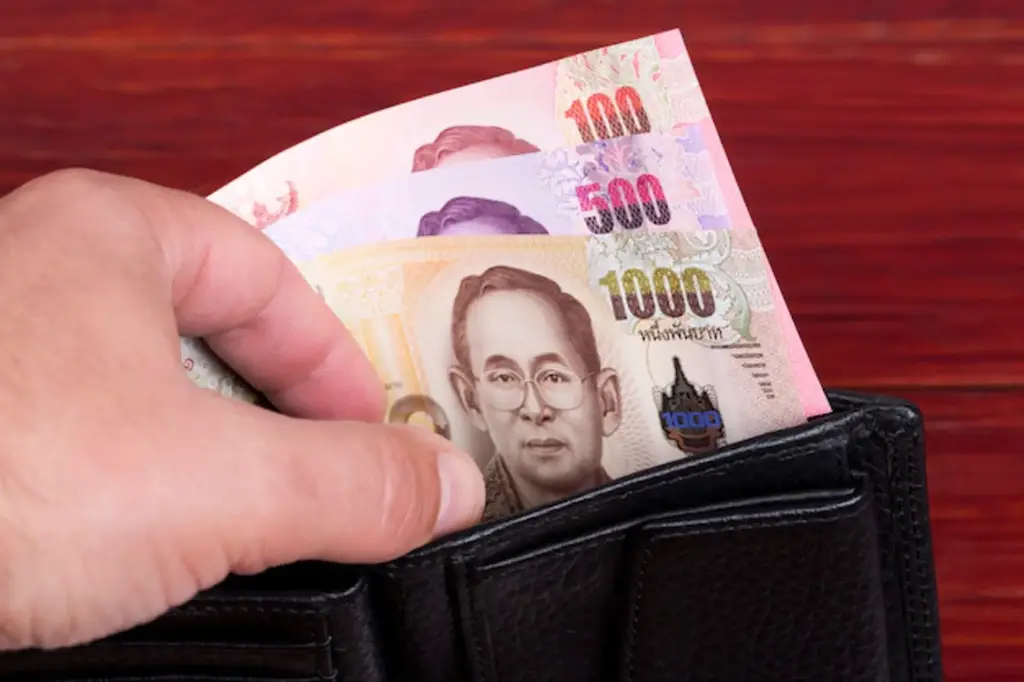Thailand’s household debt is likely to reach 16.9 trillion baht, or 91.4% of GDP, by the end of this year, with the banking system’s non-performing loans (NPLs) valued at approximately 152 billion baht, according to TMB Thanachart Analytics.
Household debt stood at 16.2 trillion baht at the end of the third quarter last year, up 3.4% from the same period the previous year, and accounted for 90.9% of GDP.
The 3.4% increase was lower than the same period in 2022 because commercial banks tightened lending procedures, which contradicted credit card loans, leasing, and personal loans, which expanded at a faster rate over a decade, according to TMB Thanachart Analytics.
NPLs in the banking system rose by 2.79% to around 152 billion baht, while outstanding auto loan repayments, which were past due by 1-3 months, were about 170 billion baht, excluding loans by non-bank organisations and special financial institutions (SFIs).
The bank stated that the predicted sluggish expansion in household debt this year is consistent with the gradual economic recovery.
Thailand’s household debt level in the future remains fragile due to the slow rate of economic recovery, even though the economic outlook for this year is stronger than the previous year, rising financial charges, which may influence debtors’ ability to repay, and a lack of financial discipline among Thais.
Household debt of more than 80% of GDP will have a long-term impact on consumption and economic growth. According to TMB, one-third of household debt is for consumption, such as credit card borrowing and personal loans, both of which are deemed non-productive.
As long as the grassroots economy is weak, borrowers’ debt servicing ability will not improve, according to the bank, which proposes responsible lending practices with the implementation of risk-based pricing to strengthen home debtors’ financial discipline.
Thailand’s Fiscal Policy Office forecasts 2.8% GDP growth this year
Thailand’s economic growth this year is predicted to be around 2.8%, driven primarily by increased exports and tourism. Pornchai Theeravet, director-general of the Fiscal Policy Office and spokesman for the Finance Ministry, said this compares positively to last year’s 1.8% GDP growth.
He predicted 33.5 million foreign arrivals this year, a 19.5% rise from the previous year. This will create around 1.48 trillion baht in tourism income, a 23.6% rise over the previous year.
Thai exports fell by 1.5% last year, owing primarily to an economic slowdown in Thailand’s primary trading partners. The manufacturing production index shows that exports of vehicles, computers, and electronic items were particularly heavily hit.
Last year, imports fell by 1.9% year on year, owing to a dip in the value of the Thai baht in the first three quarters of the year, before rebounding in the fourth.
Pornchai stated that the US Federal Reserve’s hike in interest rates, as well as Japan’s relaxation of fiscal policy, had led to the Thai baht’s strengthening to an average of 34.81 baht per US dollar.
In terms of capital and bond markets, he stated that foreign investors sold approximately 330 billion baht of their investments last year, resulting in a foreign currency outflow.
He predicts that Thai exports will grow by about 4.2% this year, while imports will rise by about 4%, with inflation expected to rise by only 1% for the year, and Dubai crude will stabilise at US$82/barrel, which is close to last year’s US$81.9/barrel due to a slowdown in demand.
Pornchai stated that the government should emphasise infrastructure development for long-term sustainable economic development, including sustainable energy development, digital economy investment, and regional connection development.
It should also focus on skill development to equip Thai workers with the skills needed in a changing labour market, as well as budgetary stability.






